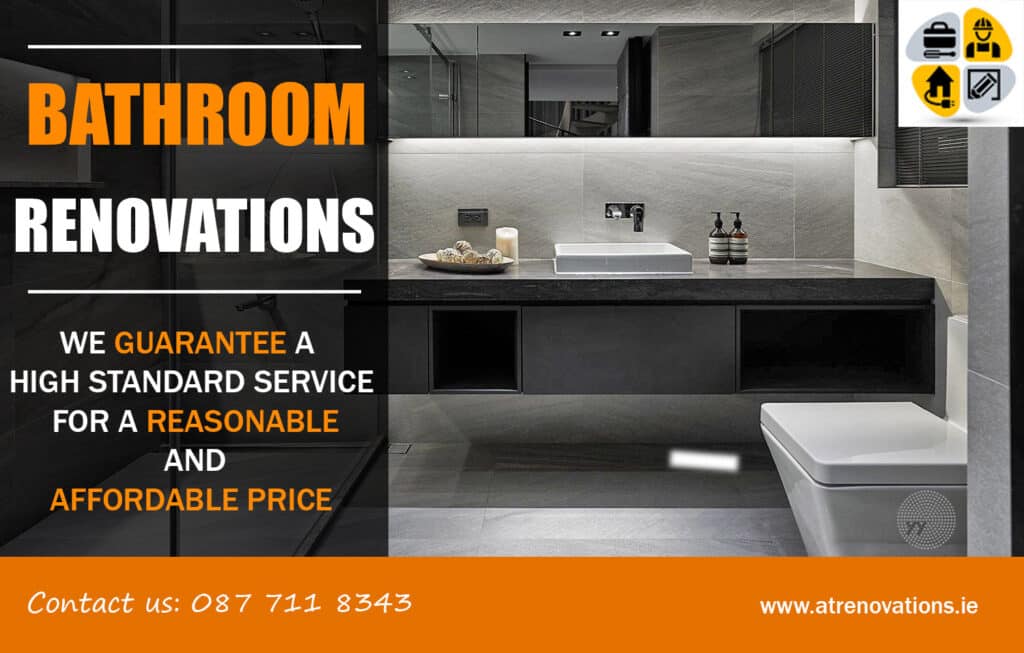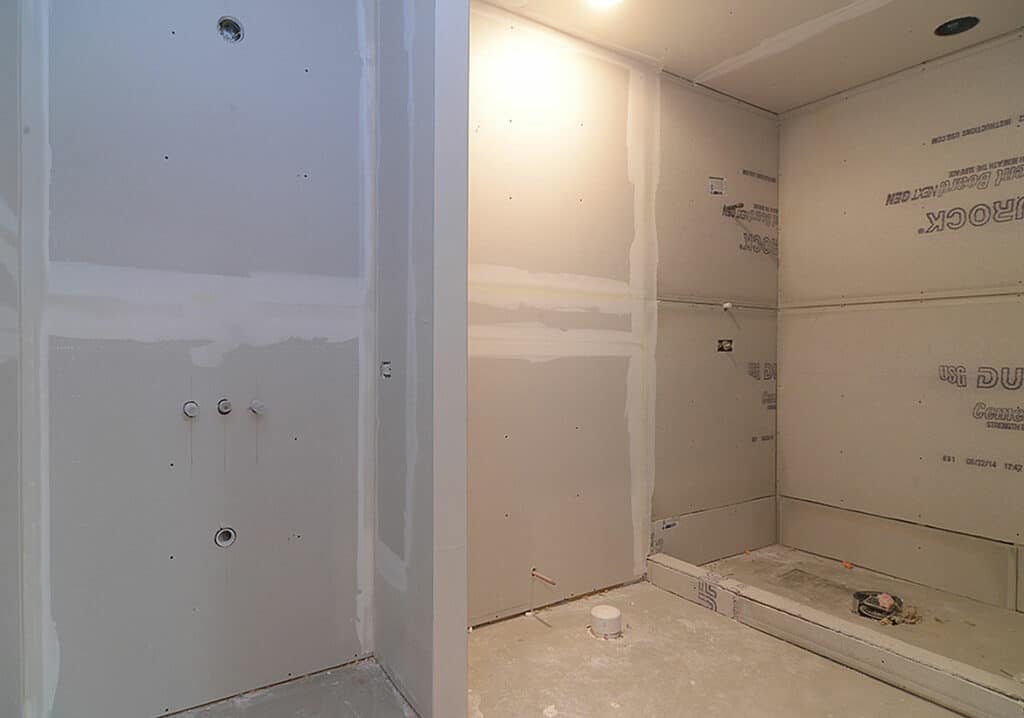You want to turn your bathroom into a room which is a beautiful, relaxing, and highly functional. When you think of bathroom renovation, images of pristine and sparkling white surfaces probably come to mind. In reality, though, every well-renovated bathroom Dublin goes through a phase when the bathroom looks like the scene of a hurricane or earthquake disaster. To get the best results, you need to carefully plan the renovation project and set clear expectations.

Start with the big picture in mind. In other words, determine the size of the renovation project that you plan on doing. There are many different bathroom renovation categories, such as..
- Surface-level renovations. These are often the easiest as they don’t involve changing the size or layout of your bathroom. You fix up, rather than replace, your bathroom’s surfaces like the walls and floors.
- Remove and replace. Again, you retain the size and layout of the bathroom, but you rip off the surfaces to make changes such as replacing the plumbing, floors, and so on.
- Layout alterations. These bathroom renovation projects change the layout by relocating fixtures such as the sinks or bathtubs. Your fixtures and wiring may also undergo a complete overhaul.
- Altering the size and layout. These projects do more than moving and replacing fixtures; they involve resizing the bathroom. You may plan to make structural changes such as moving or eliminating walls to make the bathroom larger.
Once you settle on the type of project you want to undertake, make sure to develop a plan for it.
Determine Your Budget for the Bathroom Renovation
The cost of bathroom renovations in Dublin varies widely. Such a project is often a substantial investment. The cost of changing accessories and surfaces can run into several thousand dollars. A standard mid-tier renovation project that involves a complete overhaul of fixtures ranges between €15,000 to €20,000. Extensive projects can cost over €30,000.
Despite the relatively small size compared to other rooms in your home, bathrooms tend to be costly to renovate because the project usually involves hiring several subcontractors and buying a variety of expensive bathroom elements such as cabinetry and fixtures. Many homeowners use a home equity loan for bathroom renovation projects.
Decide Whether to Hire a Contractor or Go DIY

Once you have a clear picture of the scope of the bathroom renovation project you want and your budget for it, the next step is deciding whether to do it yourself or hire professionals. The type of bathroom renovation project you plan to undertake will inform this choice.
If you plan to do surface alterations, you can usually do them yourself because these projects often involve simple cosmetic changes. On the other hand, if you plan to replace bathroom elements (surfaces, lighting, plumbing, and so on) and change the size and layout of your bathroom, you might want to consider hiring a contractor.
You’re better off hiring professional contractors for moderate to large bathroom projects because their experience and expertise increases the likelihood that you will achieve the results you want. As mentioned earlier, a bathroom renovation is often a substantial investment. Protect that investment by taking the time to identify the best contractor for the job.
There are several things to consider when looking for a contractor for your bathroom renovation. To begin with, the contractor must have relevant licenses and adequate insurance coverage. Moreover, the ideal contractor for a bathroom renovation is one who specializes in such projects because they are more likely to pay close attention to details that general contractors might otherwise miss.
You can search for contractors online and seek recommendations from people you know who have successfully renovated their bathrooms. Start by looking into several contractors and then narrow your list down to three or so promising contractors. Interview these contractors face-to-face and ask them for references from previous customers.
Once you identify a contractor you like, be sure to sign a written agreement with them. The contract should comprehensively detail the full scope of the project and its cost.
7 Bathroom Renovation Ideas for a beautiful bathroom.
Renovating your bathroom in Dublin is a great investment, it enhances its style and improves the value of your home. The improvements you make will serve your household for years. If you plan to renovate your bathroom in 2020, here are some ideas to add to your bathroom’s comfort, storage and functionality.
1. Install a hidden-tank toilet

Hidden-tank toilets have water storage vessels that mount inside the wall. Needless to say, these toilets save space. Also referred to as hidden-cistern toilets, these toilets also save water if you go for the low-flow models. They’re a great fit for modern bathroom but still work for all bathrooms.
Just keep in mind that hidden-tank toilets can make routine maintenance hard in case you need to access the tank’s inner mechanisms. Some of these “tankless” toilets use a pressure valve similar to the one found in public or commercial bathrooms. These models give the bathroom an industrial character.
2. Use small, textured shower tiles
The tiles you use for your shower floor play the most role in your safety in the bathroom. Consider using small, textured tiles. Along with the additional grouting, the texture will prevent slippage on a wet, soapy bathroom floor. Most modern shower tiles are not only easy to clean but they also use grout that resists stains and mold. Porcelain and ceramic tiles provide numerous opportunities for décor and style. Achieve a powerful aesthetic look by mixing and matching different tiles together.
3. Replace your plumbing with 2-inch drain pipes
Small and imperceptible as this improvement may seem, it can make all the difference in your bathroom’s functionality. The plumbing in most bathroom drains is PVC with a diameter of 1.25–1.5 inches. These pipes clog easily especially in homes where several household members share the bathroom. You can dramatically improve your bathroom’s drainage by installing 2-inch drain pipes that don’t cost a penny more than the narrower pipes.
4. Install a bathtub (but only if neecessary)
Many homeowners install a bathtub simply because it’s a popular fixture. However, bathtubs aren’t always a good idea, especially if you rarely take baths. Some real estate professionals insist that home buyers tend to favor homes that have a bathroom with a bathtub. They might be right but that fact is becoming less true as trends change and home buyers become increasingly picky.
Functionality should be the main factor that informs your choice of installing a bathtub in your bathroom. Install it only if you plan to use it. Otherwise, you’re better off with a large shower. Sure, a bathtub might appeal to future home buyers who have children. But if your home has an additional family bathroom that has a bathtub, you can then replace the bathtub with a luxurious shower.
5. Add a window
Humidity can wreak havoc in your bathroom when poor ventilation causes moisture accumulation. Effective as a powerful bathroom fan may be, it’s no match for natural ventilation. Add a window to your bathroom to get rid of mildew and mold. Natural ventilation also eliminates the need to leave the bathroom door open after use.
Moreover, a window lets in natural light that not only enhances the bathroom’s look but makes it safer as it’s well lit. If you plan to go the DIY way with your bathroom renovation, be sure to consult a contractor or architect to seek advice on the proper way to install a bathroom window.
6. Install a recessed medicine cabinet

A recessed medicine cabinet imbues a sleek look and expands storage above your vanity. The cost of this addition or improvement is a small fraction of moderate to large renovation projects. These cabinets are especially a great idea for bathrooms with a shallow vanity because you get more space to lean over the sink. You also don’t have to worry about hitting your head on the edge of the cabinet.
7. Augment the lighting
Most bathrooms use artificial lighting because they have little or no access to natural light. As you plan your bathroom renovation, consider replacing or augmenting the lighting in your bathroom to improve the space’s mood and functionality.
Start by installing a dimmer for the primary lighting. The dimmer lets you turn down the artificial lighting when taking a bath to make the experience leisurely. It helps set the mood too.
You can also install recessed lighting fixtures around your bathroom mirror to provide more illumination when you do tasks, such as shaving and applying makeup, that require plenty of light.
A Few Ideas for Renovating Your Bathroom Affordably

Bathroom renovation projects can be expensive. The good news is that there are steps you can take to minimize the cost. Most crucial among these steps is to spend enough time on planing and preparing for the renovation. Have a clear understanding of the bathroom you want and what it takes to get it.
Here’s how to get ahead of some common problems homeowners experience when they renovate their bathroom.
1. Moving the plumbing
It can be expensive to move plumbing pipes, especially the drainage and sewer pipes, when you renovate your bathroom. During the planning stage, consult a contractor to determine whether it’s absolutely necessary to make changes that require moving the pipes. You might be surprised to find out that you can achieve your bathroom look without making changes that were in your initial plan.
2. Tearing down or relocating load-bearing walls
Load-bearing walls support the roof or upper floors, whichever the case may be. Removing or relocating these walls involves substantial structural changes that can run up your budget. Consider expanding non-load-bearing walls that involve simple tools and no permits. Keep in mind that exterior walls are usually load-bearing, unlike interior walls that are parallel to ceiling joints.
3. Completely replacing the drywall

Bathroom renovations involve a full replacement of the drywall because of the room’s high moisture levels. Ask your contractor if your bathroom drywall needs to be replaced or if some sections are unaffected by the moisture.
4. Replacing the shower, tub or sink
Replacing or removing bathroom fixtures like bathtubs increases the cost of the renovation because it involves the demolition of old fixtures and the purchase and installation of new ones. Think about whether you want to make these changes for aesthetic or functional purposes. If your motivations are aesthetic, consider dressing up the fixtures instead. For example, you can install a liner over your shower or refinish your bathtub.
A Final Thought
Unless you plan to make surface-level alterations, renovating your bathroom is often an expensive project. Get the most out of your investment by following the tips in this article. Prepare adequately and work only with qualified and experienced contractors for moderate to extensive bathroom renovations to get the best results and achieve a gorgeous bathroom in the end.
Check out some more blogs by ATRenovations
Painting Tips
House renovation Tips
Bathroom Renovation Ideas
Useful Resources – Passive House Association Construction Industry Register Contractor insurance
